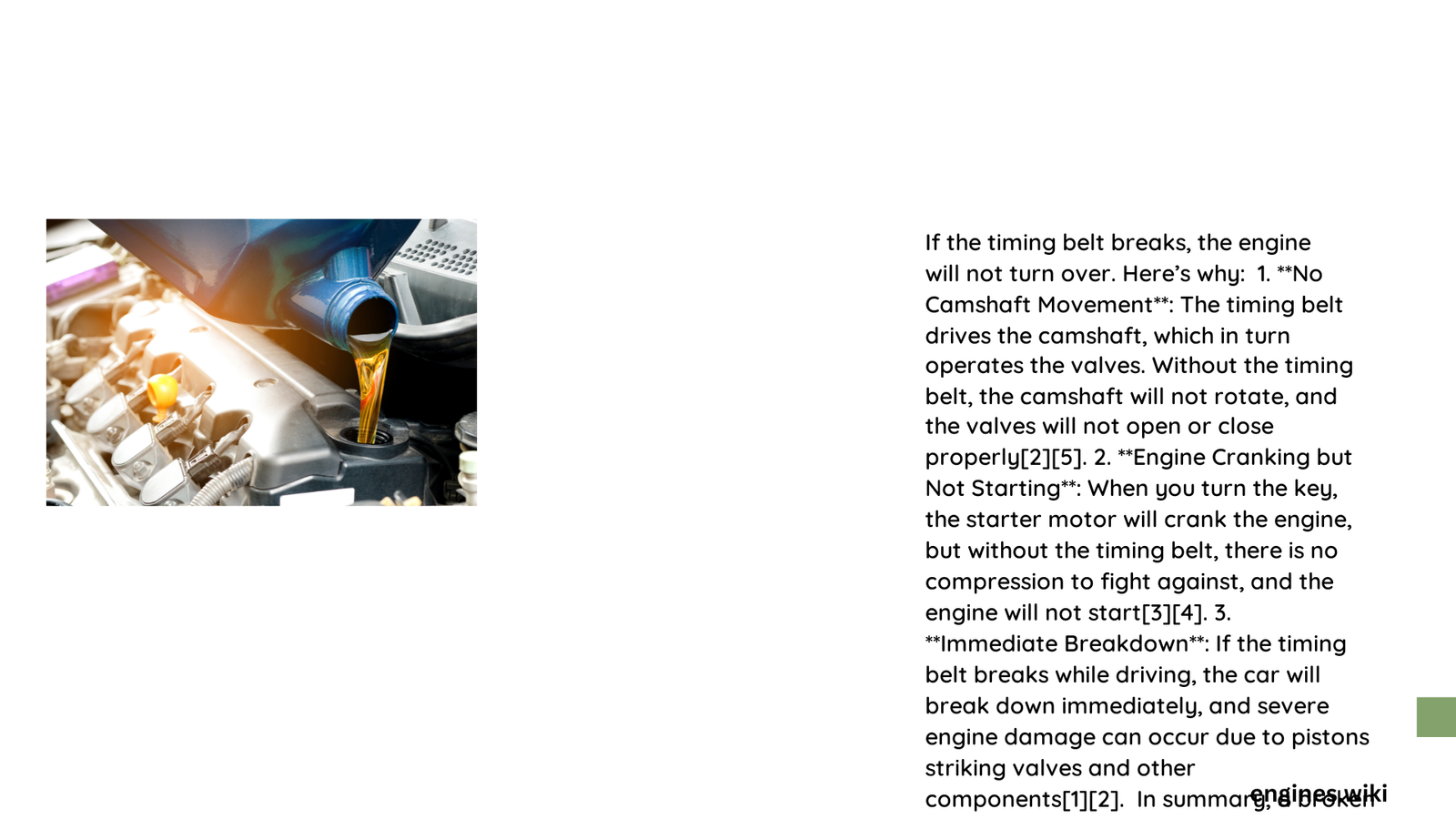A timing belt failure represents a critical mechanical event that can instantly immobilize your vehicle. When the timing belt breaks, the engine will physically turn over during cranking, but it cannot start or run due to critical synchronization failures between the crankshaft and camshaft. Understanding these mechanical dynamics is crucial for preventing catastrophic engine damage and expensive repairs.
What Occurs When Timing Belt Breaks?
Can Engine Actually Turn Over After Timing Belt Failure?
The engine will mechanically turn over when the timing belt breaks, but with significant performance limitations. Here’s a comprehensive breakdown:
Mechanical Turnover Dynamics
- Starter Motor Function: Continues rotating crankshaft
- Compression Resistance: Dramatically reduced
- Engine Start Capability: Completely prevented
| Turnover Characteristic | Detailed Description |
|---|---|
| Cranking Speed | Faster than normal |
| Compression | Minimal to non-existent |
| Synchronization | Completely disrupted |
What Specific Symptoms Indicate Timing Belt Failure?
Recognizing timing belt failure involves multiple diagnostic indicators:
- Unusual Engine Sounds
- Ticking noises
- Squealing before complete failure
-
Abrupt mechanical interruptions
-
Performance Indicators
- Sudden engine shutdown
- No successful combustion cycles
- Rapid cranking without engine start
What Potential Damage Results from Broken Timing Belt?
The consequences of a broken timing belt can be catastrophic:
- Immediate Mechanical Risks
- Potential piston and valve collision
- Cylinder head damage
-
Complete engine failure
-
Potential Repair Costs
- Minor repair: $500 – $1,500
- Major engine rebuild: $2,000 – $5,000
- Complete engine replacement: $4,000 – $8,000
How Can Drivers Prevent Timing Belt Catastrophe?
Preventative maintenance remains the most effective strategy:
- Follow manufacturer’s recommended replacement intervals
- Typically replace timing belt every 60,000-100,000 miles
- Use professional diagnostic services
- Monitor vehicle performance consistently
Why Professional Inspection Matters?
Professional mechanics can:
– Detect early warning signs
– Perform precise diagnostic tests
– Recommend timely replacements
– Prevent catastrophic engine failure
Technical Insights and Recommendations

While an engine will physically turn over with a broken timing belt, it cannot function. The mechanical rotation occurs because the starter motor can still move the crankshaft, but without synchronized camshaft movement, no combustion can happen.
Drivers should never attempt to repeatedly start an engine suspected of timing belt failure, as this can cause exponential mechanical damage.
Key Takeaway
A broken timing belt represents a critical mechanical failure requiring immediate professional attention. Understanding these dynamics can save thousands in potential repair costs.
Reference:
– Automotive Repair Insights
– Engine Mechanics Guide
– Timing Belt Failure Analysis
